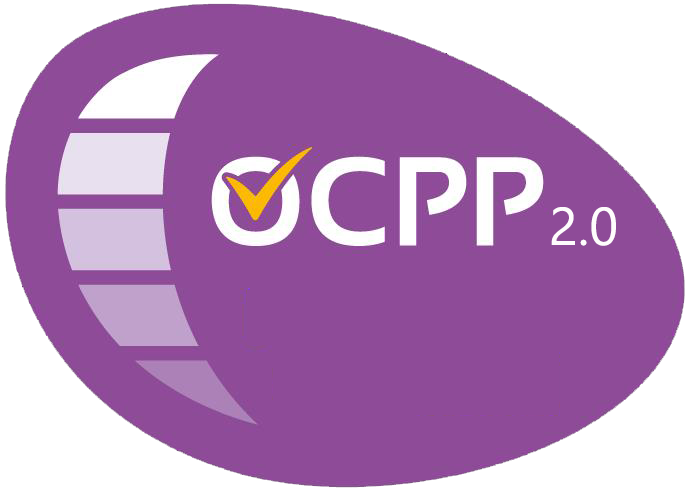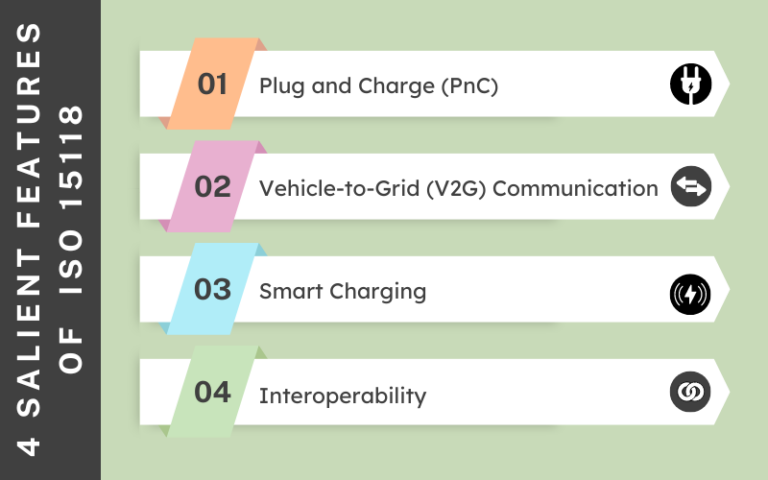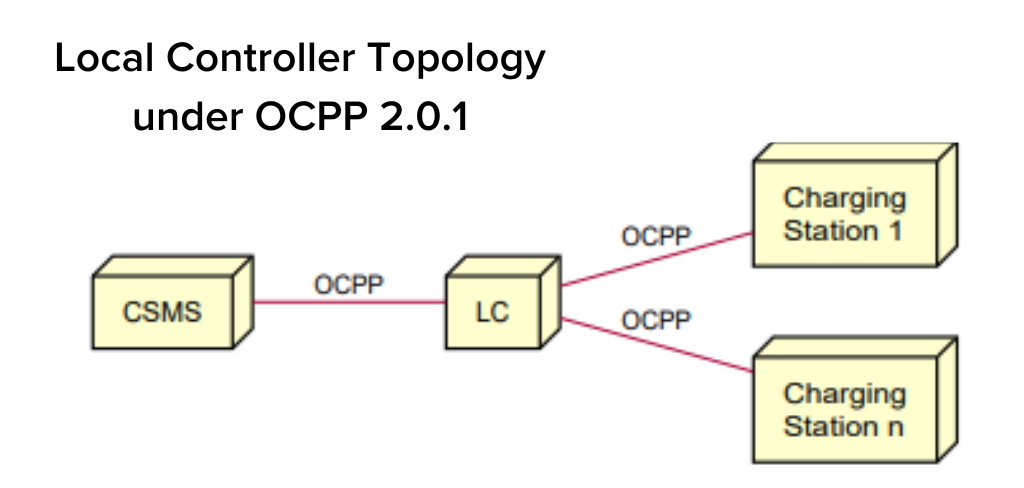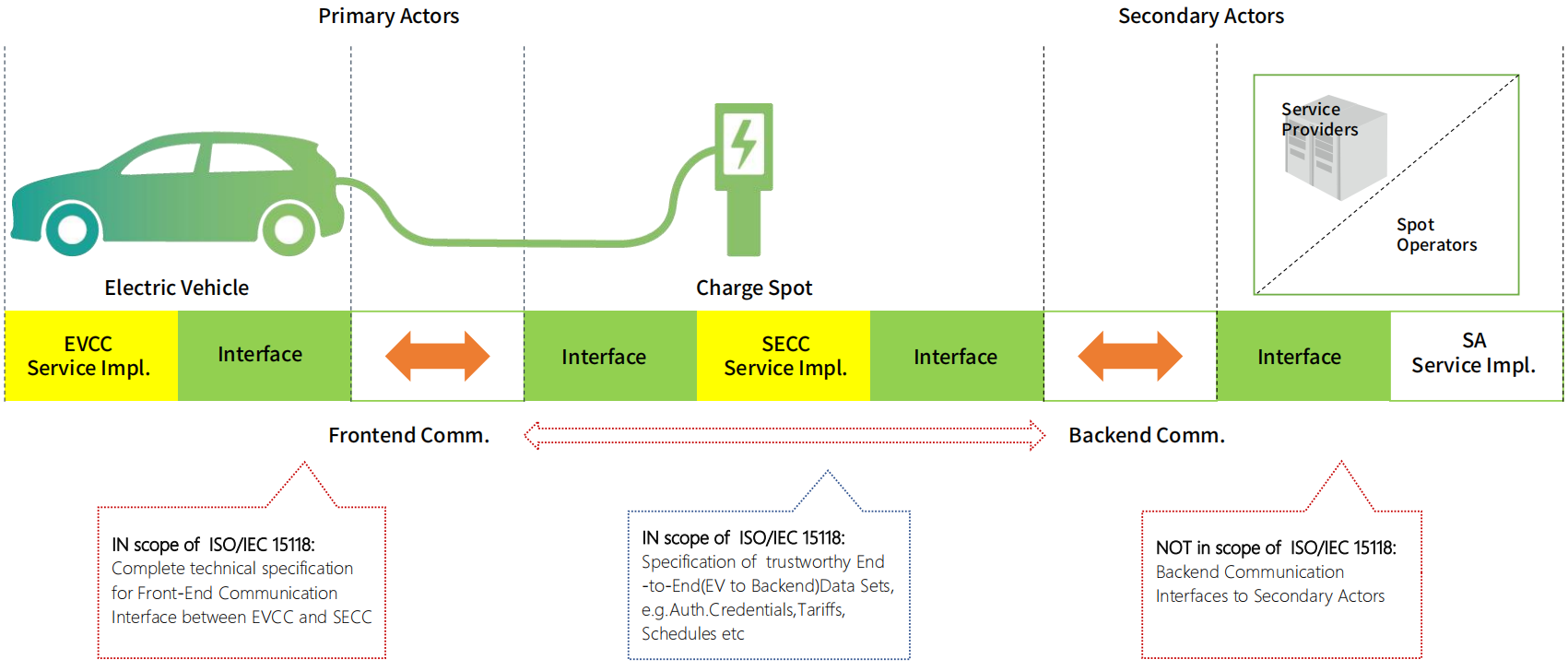About OCPP & Smart Charging ISO/IEC 15118
What is OCPP 2.0?
The Open Charge Point Protocol (OCPP) 2.0.1 was released in 2020 by the Open Charge Alliance (OCA) to build upon and improve the protocol that has become the global choice for effective communications between charging stations (CS) and the charging station management software (CSMS).OCPP allows different charging stations and control systems to interact seamlessly with each other, making it easier for EV drivers to charge their vehicles.
OCPP2.0 Features

Linkpower is officially provide OCPP2.0 with our all series of EV Charger products. The new features are showed as below.
1.Device Management
2.Improved Transaction handling
3.Added Security
4.Added Smart Charging functions
5.Support for ISO 15118
6.Display and messaging support
7.Charging operators can display information on EV Chargers
What are the differences between OCPP 1.6 and OCPP 2.0.1?
OCPP 1.6
OCPP 1.6 is the most widely used version of the OCPP standard. It was first released in 2011 and has since been adopted by many EV charging station manufacturers and operators. OCPP 1.6 provides basic functionalities such as starting and stopping a charge, retrieving charging station information and updating firmware.
OCPP 2.0.1
OCPP 2.0.1 is the latest version of the OCPP standard. It was released in 2018 and is designed to address some of the limitations of OCPP 1.6. OCPP 2.0.1 provides more advanced functionalities, such as demand response, load balancing, and tariff management. OCPP 2.0.1 uses a RESTful/JSON communication protocol, which is faster and more lightweight than SOAP/XML, making it more suitable for large-scale charging networks.
There are several differences between OCPP 1.6 and OCPP 2.0.1. The most significant ones are:
Advanced functionalities: OCPP 2.0.1 provides more advanced functionalities than OCPP 1.6, such as demand-response, load balancing, and tariff management.
Error handling: OCPP 2.0.1 has a more advanced error handling mechanism than OCPP 1.6, making it easier to diagnose and troubleshoot issues.
Security: OCPP 2.0.1 has stronger security features than OCPP 1.6, such as TLS encryption and certificate-based authentication.
Improved functionalities of OCPP 2.0.1
OCPP 2.0.1 adds several advanced functionalities that were not available in OCPP 1.6, making it better suited for large-scale charging networks. Some of the new features include:
1. Device Management. The protocol enables inventory reporting, enhances error and state reporting, and improves configuration. The customization feature makes it possible for Charging Station operators to decide the extent of information to be monitored and collected.
2. Improved transaction handling. Instead of using more than ten different messages, all transaction-related functionalities can be included in one single message.
3. Smart charging functionalities. Energy Management System (EMS), a local controller and integrated smart EV charging, charging station, and charging station management system.
4. Support for ISO 15118. It is a recent EV communication solution that enables data input from the EV, supporting Plug & Charge functionality.
5. Added security. The extension of secure firmware updates, security logging, event notification, authentication security profiles (client-side certificate key management), and secure communication (TLS).
6. Display and messaging support. Information on the display for EV drivers, regarding rates and tariffs.
OCPP 2.0.1 Achieving Sustainable Charging Goals
In addition to making a profit from charging stations, businesses ensure that their best practices are sustainable and contribute to reducing carbon emissions and achieving net-zero carbon emissions.
Many grids use advanced load management and smart charging technologies to meet charging demand.
Smart charging allows operators to intervene and set limits on how much power a charging station (or group of charging stations) can draw from the grid. In OCPP 2.0.1, Smart Charging can be set to one or a combination of the following four modes:
- Internal Load Balancing
- Centralized Smart Charging
- Local Smart Charging
- External Smart Charging Control Signal
Charging profiles and charging schedules
In OCPP, the operator can send energy transfer limits to the charging station at specific times, which are combined into a charging profile. This charging profile also contains the charging schedule, which defines the charging power or current limit block with start time and duration. Both the charging profile and the charging station can be applied to the charging station and the electric vehicle electrical equipment.
ISO/IEC 15118
ISO 15118 is an international standard governing the communication interface between electric vehicles (EVs) and charging stations, commonly known as the Combined Charging System (CCS). The protocol primarily supports bidirectional data exchange for both AC and DC charging, making it a cornerstone for advanced EV charging applications, including vehicle-to-grid (V2G) capabilities. It ensures that EVs and charging stations from different manufacturers can effectively communicate, enabling broader compatibility and more sophisticated charging services, such as smart charging and wireless payments.
1. What is the ISO 15118 Protocol?
ISO 15118 is a V2G communication protocol developed to standardize digital communication between EVs and Electric Vehicle Supply Equipment (EVSE), primarily focusing on high-power DC charging scenarios. This protocol enhances the charging experience by managing data exchanges such as energy transfer, user authentication, and vehicle diagnostics. Originally published as ISO 15118-1 in 2013, this standard has since evolved to support various charging applications, including plug-and-charge (PnC), which allows vehicles to initiate charging without external authentication.
In addition, ISO 15118 has gained industry support because it enables several advanced functions, such as smart charging (enabling chargers to adjust power according to grid demands) and V2G services, allowing vehicles to send power back to the grid when needed.
2. Which Vehicles Support ISO 15118?
As ISO 15118 is part of the CCS, it is predominantly supported by European and North American EV models, which commonly use the CCS Type 1 or Type 2 connectors. A growing number of manufacturers, such as Volkswagen, BMW, and Audi, include support for ISO 15118 in their EV models. The integration of ISO 15118 allows these vehicles to leverage advanced features like PnC and V2G, making them compatible with next-generation charging infrastructure.
3. Features and Advantages of ISO 15118

ISO 15118 offers several valuable features for both EV users and utility providers:
Plug-and-Charge (PnC): ISO 15118 enables a seamless charging process by allowing the vehicle to authenticate automatically at compatible stations, eliminating the need for RFID cards or mobile apps.
Smart Charging and Energy Management: The protocol can adjust power levels during charging based on real-time data about grid demands, promoting energy efficiency and reducing stress on the electrical grid.
Vehicle-to-Grid (V2G) Capabilities: ISO 15118’s bidirectional communication makes it possible for EVs to feed electricity back into the grid, supporting grid stability and helping manage peak demand.
Enhanced Security Protocols: To protect user data and ensure secure transactions, ISO 15118 uses encryption and secure data exchanges, which is especially important for PnC functionality.
4. What is the Difference Between IEC 61851 and ISO 15118?
While both ISO 15118 and IEC 61851 define standards for EV charging, they address different aspects of the charging process. IEC 61851 focuses on the electrical characteristics of EV charging, covering fundamental aspects such as power levels, connectors, and safety standards. Conversely, ISO 15118 establishes the communication protocol between the EV and the charging station, allowing the systems to exchange complex information, authenticate the vehicle, and facilitate smart charging.
5. Is ISO 15118 the Future of Smart Charging?
ISO 15118 is increasingly regarded as a future-proof solution for EV charging due to its support for advanced functions like PnC and V2G. Its ability to communicate bidirectionally opens up possibilities for dynamic energy management, aligning well with the vision of an intelligent, flexible grid. As EV adoption rises and the demand for more sophisticated charging infrastructure grows, ISO 15118 is expected to become more widely adopted and play a critical role in the development of smart charging networks.
Image one day you can charging without swipe any RFID/NFC Card, nor scan and download any different Apps. Just simply plug in, and system will identify your EV and start charging by itself. When it comes to end, plug out and system will cost you automatically. This is something new and the key parts for Bi-directional Charging and V2G. Linkpower now offer it as optional solutions for our global customers for its future possible requirements. Please feel free to contact us for more details.




